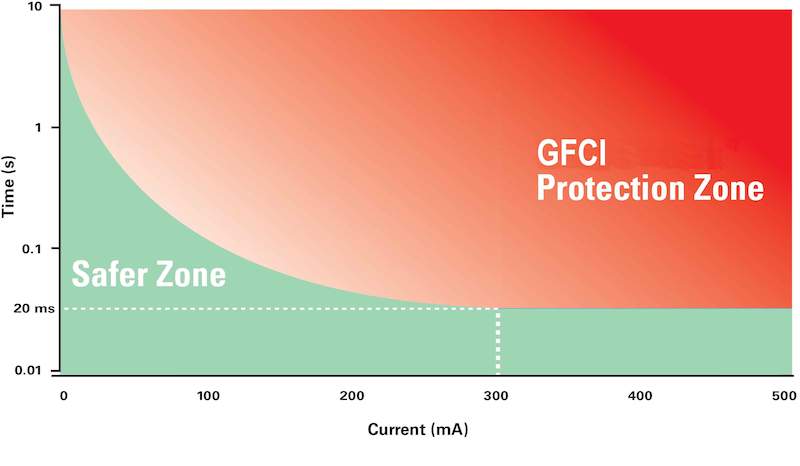Class C, D, and E GFCIs trip at 20 mA rather than the 6 mA trip current mandated for Class A GFCIs. This increase in GFCI trip level is allowed by UL assuming the availability of a reliable ground in parallel with the body. During a fault, the grounding conductor will shunt the fault current around the body and cause the device to trip. This provides the let-go protection, while the 20 mA threshold provides protection against fibrillation. (If there is no grounding conductor, such as in two-wire household products, then the GFCI must provide both let-go and fibrillation protection, and a Class A device is required.) See Figure 1.





